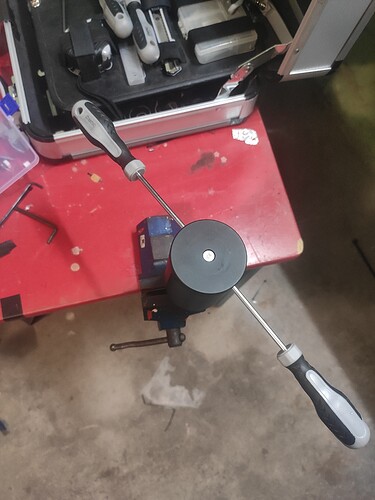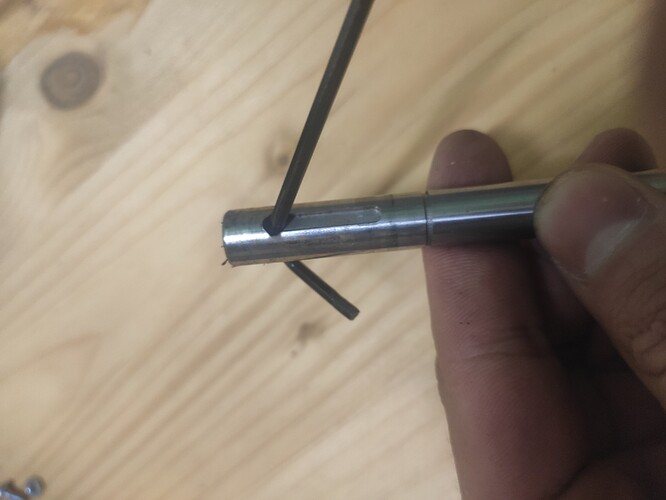I would say yes, his motor ‘pumps’ more water internally. also, the bigger the motor is (63100 vs 6384) the greater heat dissipation it has.
I don’t know, sometimes it is better to just try things out instead of thinking it over for too long. Maybe it could be optimised but that would be marginal, it works really well, the motor has around 100km and 8h in the water.
You are totally right regarding testing and not overthinking. Just considering it an interesting detail that this works well for You as remember some her mentioned "boiling water inside motor " and sized engine as result on about this size of outrunner motor with probably about same water flow as you. Can also be due to difference load on the motor and motor size like e-Jetter mentioned.
My 6384 is optimized and still consumes a bit under 400w, full throttle on 12s without a prop, even with the spoked covered, if you ask me it’s not that bad at all, after all, your rpm is much lower with prop on, so the internal water pressure/resistance is reduced significantly, I wanted to design a better spokes cover though, I really need to make some tests but I need to get my swimming pool fixed first.
Hi, I think it will be very interesting to compare your 400 watts with my outrunner 63100 (full throttle, in the water and without prop) when I finish its waterproof transformation. I’m still one silicone o-ring short of completion.
If that’s for the epoxying of the *rotor you can use plasticine/clay to cover the spokes, you can also print this ring in TPU filament.
Maybe a hypothetical question but just of interest, if the bell would be made of thicker aluminum, with grooves for the magnets, thus the magnets would be flush with the inner side of the bell/rotor. Would the aluminum between the magnets interfere with the magnetic field or not? From a cooling point of view this would be optimal.
The end bell and the magnet aligner are made of aluminium, the bell itself is some kind of iron or steel to form the magnetic field. Filling the gaps with aluminium bars might lead to increased losses because of eddy currents. From a cooling point of view, it is not optimal because material exchange (air or liquid) is the most effective way of cooling, it beats heat conduction through material by magnitude.
The lower the temperature of the winding, the better the efficiency.
Neodynium magnets do not like heat, a lot of them only withstand 80°C, especially if they are cheap.
The effect of heat on the magnets is that they loose their strength.
The effect of lower magnetic strength will be higher current consumption to produce the same torque and a higher RPM at no load.
This results in a thermal runaway and rather quick destruction of the windings.
I have had this effect with a small electric vehicle with self built motors and also with a 6374 on a motorized surfboard in the early days. The water inside was boiling, i could hear it.
All other motors worked fine with some kind of holes in the end bell, regardless how large and independent on the position.
My experience is the reason i recommend to let some water flow through the motor and exchange it if possible.
I know very well others did it differently and maybe also had success, but that is not my experience.
Thanks for taking time for this reply. So hawing aluminum between magnets would be better from heat point of view than epoxy, but eddy currents loss is not good so we can forget that. Fluid works better than epoxy between magnets for cooling, on the other hand the open gap increases losses due to increase friction…not a clear winner i guess? The bell itself is optimal from a cooling point of view surrounded by rapidly changing water, but that alone does not help much cooling the stator. If the rotor on an outrunner can be made 100% waterproof(no cover), maybe having oil inside (like the inrunners) this would be sufficient to distribute the heat, but think its still an partly unsolved issue to have a fully reliable waterproof outrunners as also inrunners, many cases on water issues even on quality brand motors.
I suggest to work on the water flow through the outrunner. Is there a way to filter out particles? Magnetic e.g. Iron particles?
Is those particles a problem in open cooled outrunners? Maybe water supply through a magnetic pipe, don’t know how this would work in reality?
I left my water (testing) barrel open for a couple of days, there was a good amount of sand that accumulated in the bottom yet I didn’t notice that since I usually test in the evening, I ran my motor unpropped and uncapped for a very long period of time, safe to say my motor can handle some sand, I open and inspect it after every run, sand doesn’t stay inside, my only fear is hitting a stray fishing line in the open water, but that’s pretty much the same risk for any type of motor since your propeller is most likely to get tangled first, not the bell.
Finally I got my motor shaft removed.
It was completely stuck. Even with heat I wasn’t able to get it off.
The only solution I found was to drill straight through the shaft and insert a pin. The shaft together with the pin was then clamped in a vise. That way the vise had something to hold on and the shaft couldn’t spin in the vise anymore.
Then I took two screwdrivers, inserted them in the holes where the grub screws were and used them as leverage.
By continuously rotating the bell I could finally work my way up.
Interestingly there wasn’t any loctite holding the shaft. It simply was an extremely tight press fit.
Great  Its always nice to succeed in a though task without breaking to much ! Its also possible they keep the shaft in a freezer prior pressing, makes it a bit easier.
Its always nice to succeed in a though task without breaking to much ! Its also possible they keep the shaft in a freezer prior pressing, makes it a bit easier.
J can u make the video open and watchable? Im currently attempting the repair one of my phase leeds that snapped at the housing

